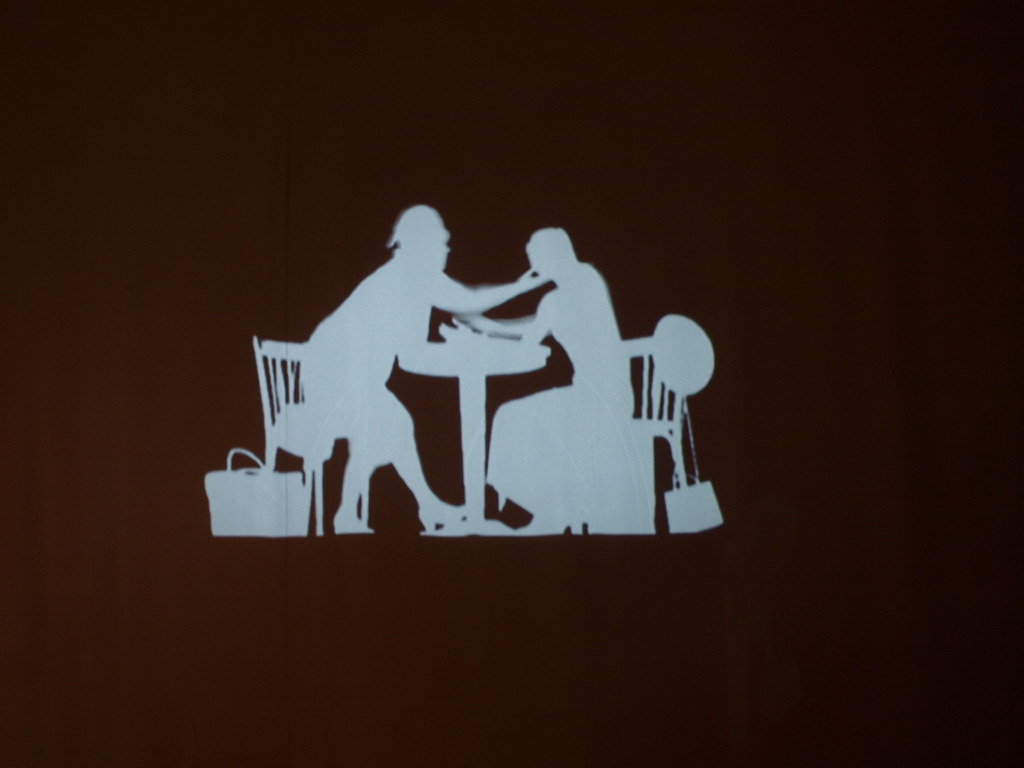Unlocking the Secrets of Non-Verbal Communication: Unleash Your Hidden Potential!
Have you ever wondered why some people effortlessly command attention when they enter a room? How is it that some individuals can convey their thoughts and emotions without uttering a single word? Fascinating, isn’t it? Communication, in all its forms, governs our every interaction, yet the true power lies not just in what is said, but how it is perceived. Welcome to the enchanting world of non-verbal communication, where every flicker of an eye, subtle gesture, and even the way we hold ourselves can speak volumes. Join us on an extraordinary journey as we reveal the secrets and wisdom that lie beneath the realm of non-verbal communication, and discover how you can enhance your own skills to leave a lasting impression on everyone you encounter. So, are you ready to unlock your hidden potential and become a master of non-verbal communication? The journey begins now!
Sommaire
- Enhancing Your Nonverbal Communication Skills: The Key to Effective Communication
- Unlocking the Power of Body Language: Understanding the Importance and Subtle Cues
- Mastering Nonverbal Communication: Practical Tips and Techniques
- Sharpening Your Nonverbal Communication Skills: Strategies for Successful Interactions
- Remarques finales

Enhancing Your Nonverbal Communication Skills: The Key to Effective Communication
Mastering nonverbal communication is essential for effective communication, as it allows you to convey your thoughts, emotions, and intentions without uttering a single word. By improving your nonverbal communication skills, you can enhance your overall ability to connect with others, understand their emotions, and build stronger relationships. So, how can you enhance your nonverbal communication skills? Here are a few tips to help you become a master of nonverbal communication:
- Pay attention to body language: Start by observing the body language of others and understand how different gestures, postures, and facial expressions can convey different messages. By becoming more aware of nonverbal cues, you can actively adjust your own body language to match the situation and enhance your communication.
<li><b>Develop active listening skills:</b> Effective nonverbal communication goes hand in hand with active listening. Show genuine interest in the speaker by maintaining eye contact, nodding to acknowledge understanding, and using facial expressions that reflect your engagement. By doing so, you create a safe and comfortable space for open communication.</li>
<li><b>Use appropriate gestures:</b> Consider your gestures as an extension of your words. When speaking, use gestures that complement your message and add emphasis. However, be mindful of cultural differences and adapt your gestures accordingly to ensure understanding and respect.</li>Furthermore, paying attention to nonverbal cues from others can provide valuable insights into their feelings and thoughts. By observing subtle facial expressions, tone of voice, and body movements, you can better understand the underlying message being conveyed, even if it differs from the spoken words. Here are a few more techniques to enhance your nonverbal communication:
- Practice mirroring: Mirroring the nonverbal cues of the person you are communicating with can foster a sense of connection and rapport. Subtly mirror their body language, such as posture or hand gestures, to create a stronger bond and establish trust.
<li><b>Control your own nonverbal cues:</b> Be aware of the messages you are conveying through your nonverbal cues. Adjust your posture, facial expressions, and even your breathing to align with the intended message and create a positive and receptive environment for effective communication.</li>
<li><b>Seek feedback:</b> Requesting feedback from trusted individuals, such as friends or colleagues, can offer valuable insights into how your nonverbal communication may be perceived. This self-reflection can help you identify areas for improvement and make necessary adjustments to refine your nonverbal communication skills.</li>
Unlocking the Power of Body Language: Understanding the Importance and Subtle Cues
Body language is a powerful form of communication that often speaks louder than words. Understanding the importance of body language and the subtle cues it conveys can greatly enhance your non-verbal communication skills. By unlocking the power of body language, you can become more effective in expressing yourself, understanding others, and building stronger connections.
One key aspect of body language is facial expressions. A smile can instantly create a positive and inviting atmosphere, while a furrowed brow may indicate confusion or concern. Pay attention to the expressions of those around you and learn to read the emotions they are conveying. Additionally, maintaining good eye contact signals attentiveness and interest in the conversation. Remember to be mindful of cultural differences, as eye contact levels may vary.
Posture and gestures also play a significant role in non-verbal communication. Standing or sitting up straight portrays confidence and command, while slouching may give the impression of disinterest or lack of confidence. Keep your arms relaxed and open rather than crossing them, as this suggests approachability and openness. Further, using hand gestures can enhance your message and help clarify your intentions. However, be mindful not to overdo it, as excessive gesturing can be distracting or come off as insincere.
By becoming more aware of body language and mastering these subtle cues, you can improve your overall communication skills. Remember, effective communication is not only about what you say but also how you say it. Take the time to observe and practice your non-verbal communication, and you’ll find yourself better connected with those around you. So why wait? Start honing your body language skills today and unlock a whole new level of communication prowess.
Mastering Nonverbal Communication: Practical Tips and Techniques
Nonverbal communication plays a crucial role in our everyday interactions, often revealing more than words ever can. To truly connect with others and convey our messages effectively, mastering nonverbal communication is essential. Luckily, there are practical tips and techniques that can help you improve your nonverbal communication skills.
1. Pay attention to body language: Body language can convey a wealth of information, so it’s important to be aware of your own body language and to observe others’. Pay attention to gestures, posture, facial expressions, and eye contact. For example, maintaining good eye contact shows interest and engagement, while crossed arms may signal defensiveness or closed-mindedness.
2. Use mirroring techniques: Mirroring is the art of subtly imitating the nonverbal cues of others, such as posture or gestures. Mirroring can help establish rapport and create a sense of connection. However, it’s important to be authentic and not overdo the mirroring, as it can come across as insincere if done excessively.

Sharpening Your Nonverbal Communication Skills: Strategies for Successful Interactions
Developing strong nonverbal communication skills is crucial for successful interactions. Whether you’re in a professional setting or navigating personal relationships, being aware of your body language and mastering nonverbal cues can significantly impact your ability to connect with others. Here are some strategies to sharpen your nonverbal communication skills:
- Pay attention to your facial expressions: Your face is a powerful tool for conveying emotions and intentions. Practice keeping a relaxed and pleasant expression, using appropriate facial expressions to match the tone of your conversation.
- Master the art of eye contact: Maintaining appropriate eye contact shows that you are engaged and attentive. However, be mindful not to stare or overdo it. Strike a balance by maintaining eye contact without making the other person uncomfortable.
- Be aware of your posture: Your posture speaks volumes about your confidence and level of involvement in a conversation. Stand or sit up straight, with your shoulders back, to exude a sense of professionalism and active engagement.
- Utilize hand gestures purposefully: Hand gestures can enhance your message and help convey your thoughts effectively. However, avoid excessive, distracting movements. Use meaningful hand gestures to emphasize important points and connect with your audience.
Remember, nonverbal communication is a powerful tool that can greatly impact how others perceive you and the overall success of your interactions. By honing your nonverbal skills, you’ll enhance your ability to connect, build rapport, and leave a lasting impression on those you encounter.
Remarques finales
In a world where words often fail to capture the true essence of our thoughts and feelings, mastering the art of non-verbal communication can be the key to unlocking secrets untold. From the subtle twitches of an eyebrow to the gentle sway of a hand, our body language can speak volumes without uttering a single word. So, if you’re ready to dive deep into the realm of unspoken expressions, you’ve embarked on a journey that transcends language barriers and connects us on a profound level.
Enhancing your skills in non-verbal communication is a voyage of self-discovery, a dance with your own body and a harmonious symphony of gestures and expressions. Awareness is your compass, guiding you through the hidden whispers of others’ unspoken words. Take the time to observe, to truly see and understand the unspoken rhythm that underlies every encounter.
As with any journey, a map is essential, and luckily, there are many paths to explore. Delve into the world of microexpressions, those fleeting emotions that flash across someone’s face, revealing their true state of mind. Expand your repertoire with the nuances of body postures, discovering the power of an open stance or the subtleties of mirroring another’s movements.
But remember, it’s not just about decoding the messages others convey; it’s also about fine-tuning your own non-verbal symphony. Master the symphony of confidence by standing tall and making eye contact. Conduct the movement of your hands, letting them enhance your words, not distract from them. And let your face be the canvas where emotions elegantly paint their presence.
In this era of virtual interactions, where screens have become our stage, it’s easy to overlook the importance of non-verbal communication. But fear not, for even the digital realm offers opportunities to refine these skills. Pay attention to the subtleties of virtual body language, the warmth of a smile conveyed through a screen, and the power of a well-timed nod.
So, fellow explorers of unspoken realms, may your journey be filled with countless revelations and serendipitous encounters. Embrace the magic of non-verbal communication, for it dances between silence and understanding, bridging the gaps that words alone cannot traverse.
As you venture forward, let your newfound knowledge guide you towards deeper connections, improved understanding, and a world where communication transcends the limits of speech. For in the end, the beauty of non-verbal communication lies not only in decoding its intricacies but also in the joy of expressing ourselves without saying a word.




